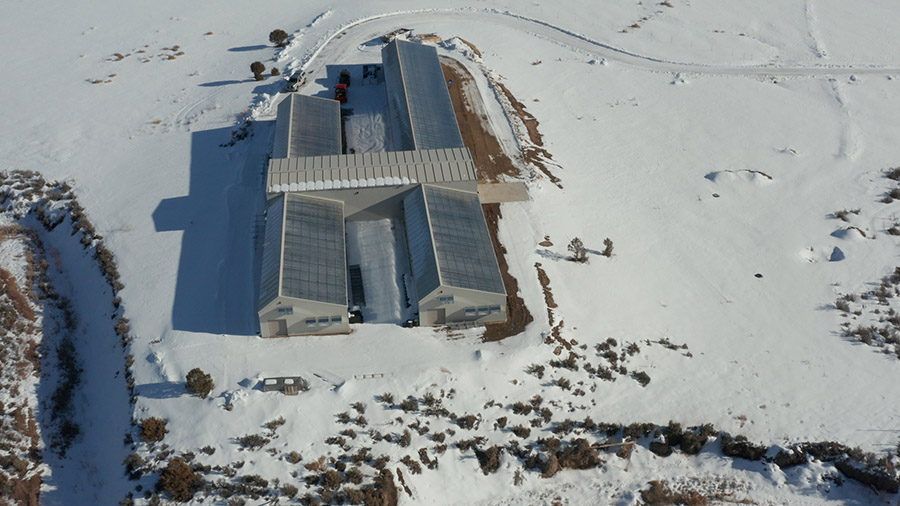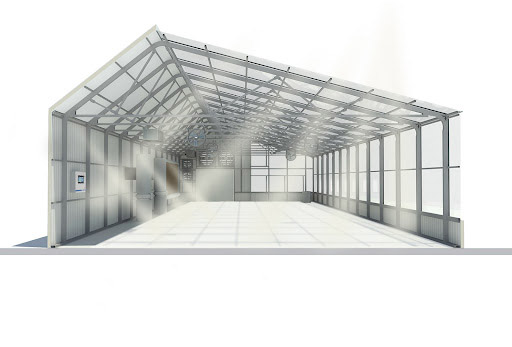If you are a grower living in a colder climate, you need structural integrity and full environmental control for successful year-round greenhouse production through the cold, dark and snowy winter months.
Best Year-Round Greenhouses for Cold Climates
Article from | Ceres
Not all greenhouses are created equal. Variance in greenhouse design, heating systems, and structural materials make certain greenhouses more applicable for colder climates than others. For instance, a hoop house might be a great season extender for a grower in the Pacific Northwest, but it couldn’t withstand high wind and snow loads that occur in regions like the Midwest or Canada. If you are a grower living in a colder climate, you need structural integrity and full environmental control for successful year-round greenhouse production through the cold, dark and snowy winter months.
At Ceres, we get a lot of questions about whether our greenhouse design is fit for colder climates. The answer is YES, Let us explain why Ceres greenhouses are the best greenhouses for cold climates.
What is the best type of greenhouse design for winter?
Greenhouse designs for cold weather should prioritize insulation and light-harvesting for productive growth that doesn’t require a lot of heating. Traditionally, greenhouses are designed to maximize interior sunlight and solar gain for ideal greenhouse temperature. While this sounds desirable, oftentimes this concept entails glazing materials making up most of the greenhouse. Excess glazing allows heat to escape faster, making a greenhouse inefficient and expensive to heat if you live in a colder climate. If you live in a northern climate you’ll want your winter greenhouse to be insulated while also allowing a sufficient amount of sunlight in.
At Ceres, we’ve patented a passive solar greenhouse design that harvests the sun’s energy and retains it with insulated north, west and east solid end walls. The east-west orientation of our greenhouses allows for sunlight to enter the greenhouse through the south-facing roof and wall, and reflect off the north wall back onto the plants. With this design our growers are seeing light levels of up to 100% more inside their greenhouse than outside their greenhouse in the Winter. Additionally, our insulated walls work well to retain thermal energy inside our greenhouses, lowering heating costs.
How to efficiently heat your greenhouse in the winter
Even with an insulated design, using supplemental heating may be necessary in a winter greenhouse, depending on what you want to grow. Common ways of heating a cold climate greenhouse include installing an HVAC system or using space heaters. While effective, these methods can really bump up your energy bill through the Winter months. An alternative would be to choose a more sustainable and energy-efficient heating system like a Ceres GAHT® System.
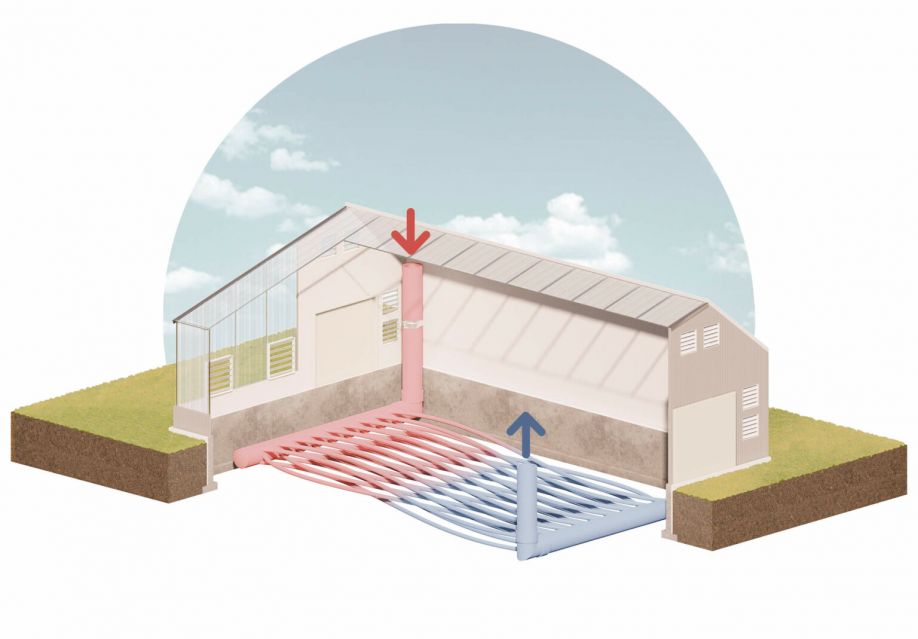
Our patented GAHT® (ground to air heat transfer) System is a form of climate battery that provides year-round climate control by utilizing the volume of soil underground as thermal mass to help regulate internal temperatures. Our GAHT® system uses minimal energy to operate and will heat and cool a greenhouse at a fraction of the cost of a traditional HVAC system. This system is effective in all climates because, below Earth’s surface, soil temperatures remain constant year-round – at about 50-60°F. Our GAHT® system harnesses that energy in the soil for efficient heating. Also, the perforated pipes of our GAHT® system can be installed at varying depths to accommodate deeper frost lines.
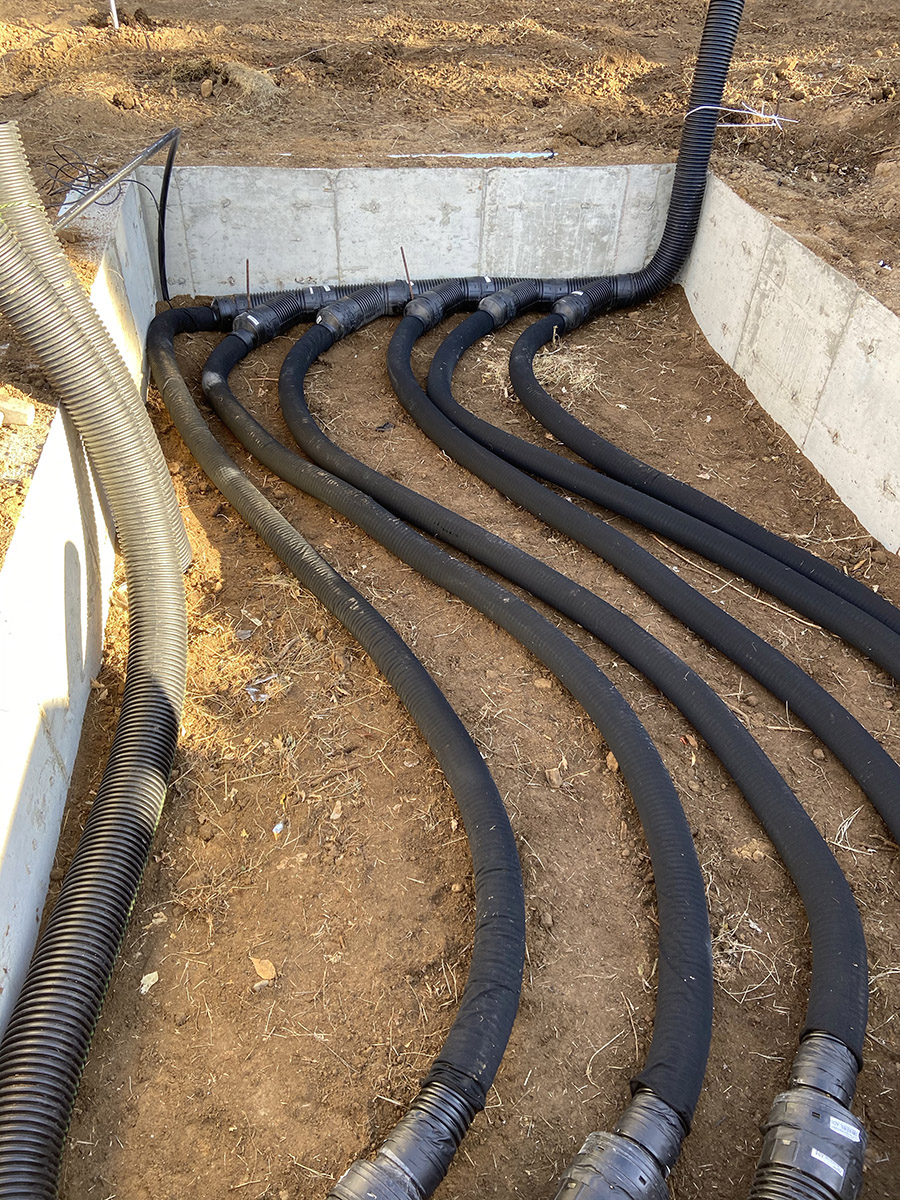
Ceres has designed and installed more air heat exchange systems than any company worldwide and many of our clients use their GAHT® system as their sole source of heating and cooling for their year-round greenhouses.
Greenhouses built for the long run
A greenhouse optimized for cold weather can withstand high wind and snow loads while maintaining a controlled temperature within. Different structural materials are better than others when it comes to building a winter greenhouse. For instance, a galvanized steel frame will endure the harshest of Winter climates and will last much longer than a stick frame or even an aluminum frame.
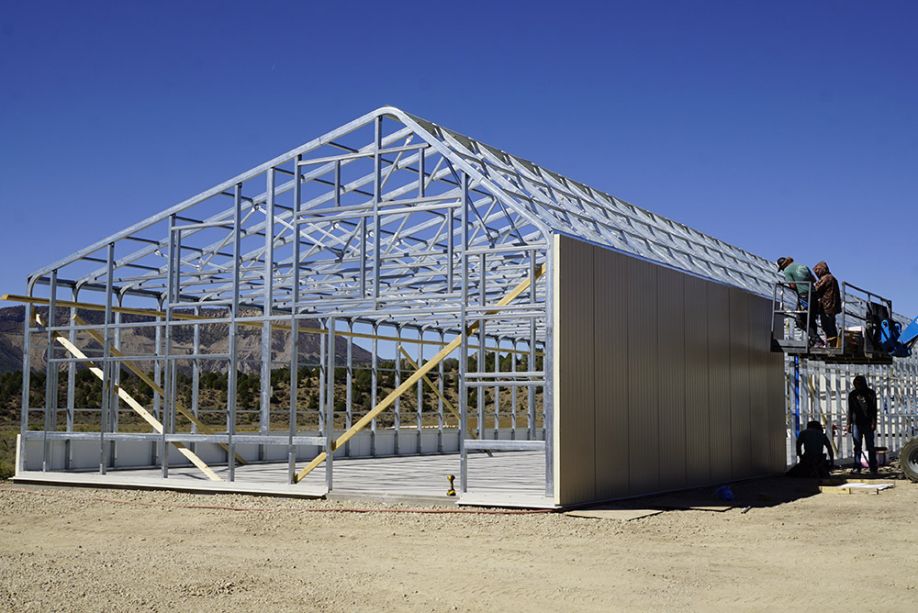
At Ceres, we take into account your wind and snow loads in order to design the best greenhouse for cold climates. This means determining appropriate truss spacing so your greenhouse can stand against 75+ mph winds, and recommending glazing material that will allow high light transmission while also supporting a heavy snow load. It’s also imperative that you consider materials with higher insulation values for your cold weather greenhouse. Our insulated metal panels (IMPs), that make up the north, east and west walls, work to prevent heat and light from escaping. We offer IMPs with insulation ratings up to R-42. For more information on greenhouse materials and their specifications, contact a greenhouse expert.
Case Study
We invite the challenge of designing and building greenhouses for extreme climates. In fact, part of our core vision is to provide growing solutions for regions where producing food year-round is challenging. Here’s a quick story about one of our clients who lives in Almonte, Ontario, Canada – a place where Winter lasts about 6 months out of the year.
This client came to Ceres because he was tired of buying “crappy greens from California” (that’s a travel distance of 3,000 miles or 4800 km). He wanted a year-round greenhouse to produce his own lettuce, that was more efficient than the traditional greenhouse designs he saw on nearby farms. Ceres worked with him to design a passive solar greenhouse that would use innovative technology to successfully grow greens through the bitter cold Almonte Winter. The goal was to see how inexpensively we could build a high-tech Canadian greenhouse. Ceres took into account his local wind and snow loads and designed a 30’x70’ HighYield™ Kit greenhouse combined with a GAHT® system.
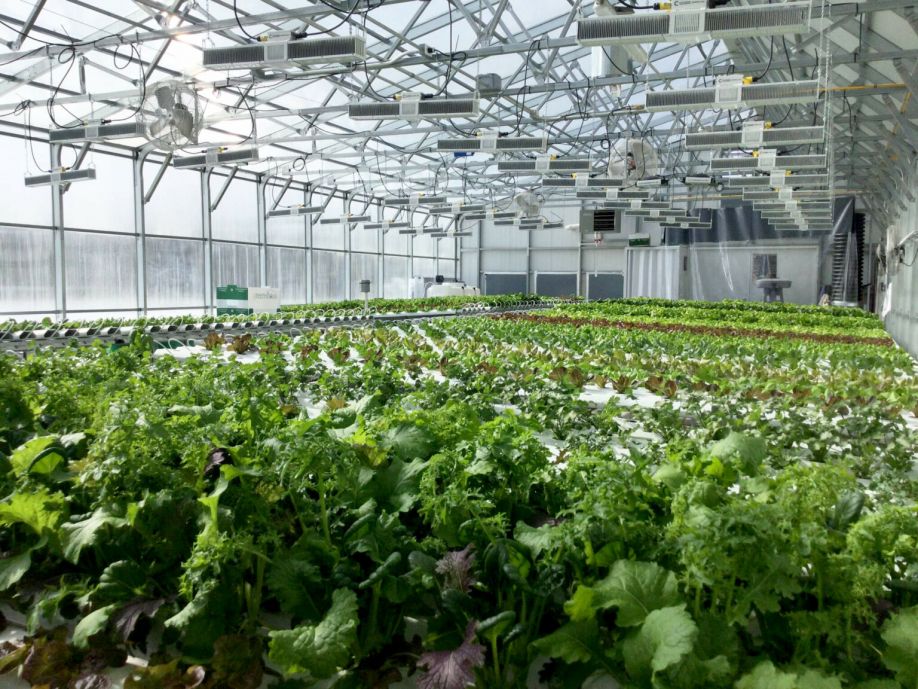
Construction of his greenhouse finished in August and he is currently producing lettuce hydroponically at full capacity for himself and the local community. The name of his greenhouse farm is “Greenshaus Inc.” which is a nod to the German engineering of the structure. While he does use a propane heater to supplement his GAHT® system through the coldest days, he is using 5,400 gallons of propane less than what he would use in a traditional greenhouse. That equates to saving 30 tons of CO2 from being emitted into the atmosphere. November temperatures outside his greenhouse get down to 22°F (-7°C) and the inside of his cold weather greenhouse consistently stays above 55°F (12°C). We are excited to see data like this coming from one of our more standard greenhouse designs.
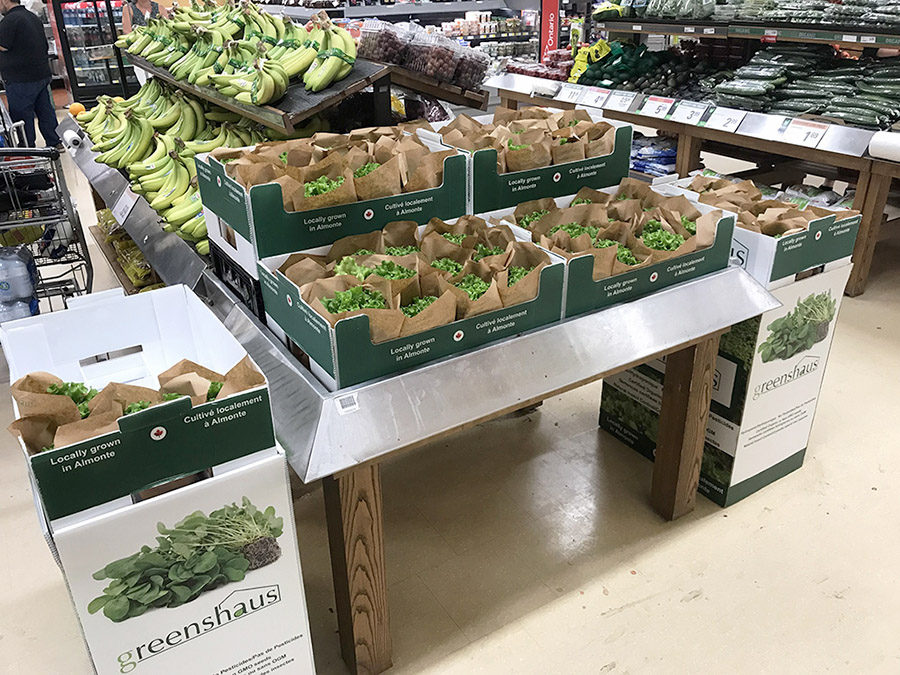
The lettuce that he grows arrives on the shelves of the local grocery stores, or is served at a local restaurant, the same day it’s picked. He also serves his local community by opening up his greenhouse to the public on Thursdays. Community members come by and pick their own lettuce and get to shake the hand of the farmer who grew it. And we can attest that his greens are incredibly tasty and fresh and don’t have the flavorless quality of lettuce that’s been shipped thousands of miles.
If you would like to learn more about this client’s greenhouse journey or have questions about your cold weather greenhouse project, contact us.
The content & opinions in this article are the author’s and do not necessarily represent the views of AgriTechTomorrow
Comments (0)
This post does not have any comments. Be the first to leave a comment below.
Featured Product


